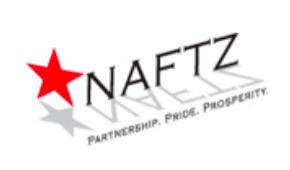Tempo de leitura: 4 minutos
In the short-term, a border wall may help stem the flow of Central American migrants across the US southern border, but any enduring immigration strategy needs to build bridges too. Improving and diversifying Central America’s free trade zones (FTZs) to create more jobs and opportunities is a specific example of how to do so.
It’s not difficult to understand the appeal of migrating from Central America to the US. For comparison, Maryland is a little bigger than El Salvador in geographic size and has a similarly sized population, but enjoys a GDP per capita fifteen times higher.
It’s no coincidence that prosperity, like that in Maryland, exists almost exclusively in free democracies. Democracies build institutions that uphold civil liberties and political rights, usually referred to as the “rule of law.” This is the magic sauce that creates the boring, predictable stability that unleashes private enterprise and generates wealth.
Immigrants from Central America are fleeing a plague of gang violence fueled by drug cartels and gangs, like MS-13. El Salvador and Honduras have the highest murder rates per capita in the world. Americans are worried about this violence spreading into the United States. But constructing a bubble is not a comprehensive, long-term strategy.
The situation in Central America is bad. It is shamefully bad when one considers how small, geopolitically strategic, and geographically close these allies are to the United States. Of course, violence and instability are not new to the region. We share a complicated and bloody Cold War history with many Central American countries which casts a long shadow over their current political and economic circumstances.
When young men do not have jobs, violence becomes more prevalent. Whether it is gangs, civil war, addiction, or suicide, examples of this correlation between unemployment, lack of opportunity, crime, and violence can be found throughout the world and history. In Nick Eberstadt’s book, Men Without Work, he estimates that there are perhaps as many as seven million US men that have given up looking for work—more than the entire population of El Salvador.
Putting these young men to work could be accomplished with improvements to Central America’s free trade zones, without more US foreign aid programs, or IMF or World Bank loans. Improving these FTZs would mean helping Salvadorians, Hondurans, and Nicaraguans to help themselves through strategic rule of law incentives aimed at encouraging the private sector to produce jobs and opportunities, for all Americans, Central and North.
The structure and basic legal frameworks for such incentives already exist. In particular, El Salvador has 17 free trade zones that are home to 242 firms (primarily owned by Salvadorians, Americans, Taiwanese, and Koreans) working in textiles, distribution, call centers, business process outsourcing, agribusiness, agriculture, electronics, and metallurgy.
Like most of the world’s approximately 4,000 zones, they offer specific benefits for locating to a specific area. According to the US State Department, Salvadorian FTZs offer:
Exemption from all duties and taxes on imports of raw materials and the machinery and equipment needed to produce for export; Exemption from taxes for fuels and lubricants used for producing exports; Exemption from income tax, municipal taxes on company assets and property; Exemption from taxes on certain real estate transfers.
These zones are essentially an economic tabula rasa rife with opportunity.
The US government also manages its own system of hundreds of FTZs. The US FTZ Commission, set up by the 1934 Foreign Trade Zone Act, is currently managed jointly between the Departments of Treasury and Commerce. Compliance standards are managed by Customs and Border Patrol (CBP) and Homeland Security Investigations (HSI). The US zone program is ranked one of the best in the world at applying rule of law standards to trade. In fact, the compliance system works so well that you have probably never even heard about the program.
There’s no reason our excellent zone compliance practices shouldn’t be shared. There should be a concerted effort to help Central American countries structure their zones in a way that will combat the illicit trade and finance that flow through them, while diversifying them away from their unhealthy concentration in textiles and attract other, much needed sectors.
There are many sectors that zones in other parts of the world have had success in attracting and where there could be mutual social and economic gains from increased trade. Two sectors with the potential to transform the region and mitigate the crises sending migrants north include media firms and non-profits. Investment from US media firms could provide much-needed political transparency, bolstering local democracy and markets, and delivering an infusion of media delivery and production best practices. The introduction of non-profit organizations, including NGOs and universities, could deliver better health and educational opportunities for people throughout the region. And there are countless more that could be attracted with equally beneficial outcomes.
Creative thinking is necessary to solve complex problems, like mass migration. However, it is important to remember that immigration is not wholly separate from issues of trade, unemployment, and violence. Walls may work. But so do bridges.






Os comentários foram encerrados, mas trackbacks e pingbacks estão abertos.